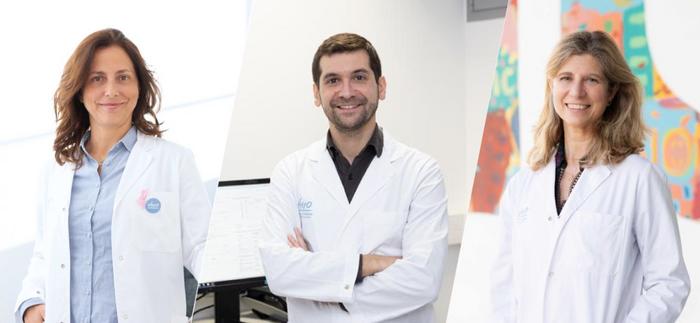Potential of RAD51 Biomarker in Early-Stage Breast Cancer Treatment
Recent advancements in oncological research have illuminated the complexities of breast cancer treatment, particularly for early-stage cases. The Vall d’Hebron Institute of Oncology (VHIO) has made significant strides with the introduction of a functional biomarker known as RAD51. This groundbreaking study, featured in the journal Clinical Cancer Research, highlights RAD51’s potential role in personalizing treatment approaches for patients diagnosed with early HER2-negative breast cancer.
The key to effective cancer treatment lies in the tailored strategies that can minimize aggressive therapies, such as conventional chemotherapy. Violeta Serra, leading the Experimental Therapeutics Group at VHIO, emphasizes the pressing need for research to identify biomarkers capable of pinpointing patients who would benefit from more nuanced treatment regimens. The innovative RAD51 test, developed by Serra’s team, aims to detect the RAD51 protein as a marker for homologous recombination repair (HRR) capabilities in tumor cells.
In a collaborative effort with the German Breast Group (GBG), investigators set out to explore the efficacy of the RAD51 test on tumor samples from the randomized GeparOla clinical trial. This trial compared the pathological complete response rates in patients subjected to neoadjuvant therapy employing the PARP inhibitor olaparib against those treated with traditional carboplatin chemotherapy. The RAD51 biomarker could reshape clinical pathways, guiding decisions that enhance patient outcomes and diminish the over-reliance on aggressive treatment options.
The GeparOla trial specifically included patients with early HER2-negative breast cancer exhibiting homologous recombination deficiency (HRD). A post hoc analysis of the trial’s data scrutinized whether the RAD51 test could accurately predict patient responses to the two neoadjuvant therapies among this pre-selected cohort. Guillermo Villacampa, the head of VHIO’s Biostatistics Group and co-author of the study, unveiled important findings regarding the relationship between RAD51 protein levels and patient responses to treatment.
Among the 90 tumor samples evaluated for RAD51 testing, a striking 80% displayed RAD51 protein levels that correlated with functional HRD. Notably, patients who underwent treatment with the PARP inhibitor olaparib and harbored HRD as determined by the RAD51 test exhibited a remarkable 66.7% pathological complete response rate. In stark contrast, those without HRD by RAD51 showed a significantly lower response rate of merely 22.2%. These compelling statistics underscore RAD51’s prognostic capacity, suggesting it can serve as a robust predictor of treatment efficacy.
Moreover, through multivariable analysis that took into account various clinicopathological factors, the presence of tumor-infiltrating lymphocytes, and treatment modalities, RAD51 consistently demonstrated significant associations with pathological complete responses. Villaampa’s assertions highlight the importance of these findings, reinforcing the notion that RAD51 biomarker testing should be integrated into standard clinical practices to facilitate personalized medicine approaches in oncology.
Serra reiterated the significance of these experimental outcomes, advocating for future studies to refine patient selection and stratification processes based on RAD51 testing. This perspective aligns with ongoing efforts within the community to prioritize biomarker-driven research frameworks. Indeed, the RADIOLA study, orchestrated by SOLTI, aims to validate the effectiveness of RAD51 in advanced breast cancer, with preliminary results anticipated in the foreseeable future.
The ramifications of this research cannot be overstated. The prospect of implementing RAD51 testing stands to revolutionize clinical pathways for managing early-stage breast cancer, steering clear of generalized treatment protocols that fail to acknowledge patient-specific biological markers. The VHIO-led initiative sheds light on the urgent need to refine early detection and intervention strategies, asserting that with the right applications, personalized medicine could vastly improve patient prognosis and quality of life.
The funding backing this pivotal research stems from multiple reputable sources, including the ERA-NET Cofund and the Instituto de Salud Carlos III, with contributions from the European Union and the Asociación Española Contra el Cáncer. This collaborative financial support illuminates collective efforts to bolster cancer research as a vital part of public health initiatives.
As the scientific community continues to explore the depths of oncological biomarkers, the RAD51 study represents a forward-thinking approach, emphasizing the pivotal role of personalized treatment strategies in modern cancer therapies. As a leading reference center for cancer research, VHIO’s commitment to translating laboratory discoveries into clinical applications is crucial for the future of effective oncological treatments.
The conversations emerging from this study are vital as they pave the way for improved patient experiences and outcomes. Advocates for personalized medicine remain steadfast in their belief that understanding individual cancer biology will lead to more effective, less toxic treatment modalities. The path forward is clear: the integration of biomarkers like RAD51 into clinical practice could be a game-changer for the nuanced treatment of breast cancer.
As we stand at the threshold of new oncological discoveries, it is imperative to continue fostering interdisciplinary collaborations that propel this research forward, enhancing both our knowledge and our ability to combat breast cancer in all its forms. The emergence of RAD51 testing is heralding a new era in oncological treatment paradigms, one that promises to better serve patients by personalizing their care and ultimately enhancing survival outcomes.
Subject of Research: RAD51 biomarker in early HER2-negative breast cancer treatment
Article Title: RAD51 testing in patients with early HER2-negative breast cancer and homologous recombination deficiency: post-hoc analysis of the GeparOla trial
News Publication Date: 30-Dec-2024
Web References: https://doi.org/10.1158/1078-0432.CCR-24-3148
References: Guillermo Villacampa, Alba Llop-Guevara, Natalie Filmann, Andrea Herencia, Peter A. Fasching, Thomas Karn, Frederik Marmé, Peter Klare, Volkmar Müller, Andrea Stefek, Christian Schem, Christoph Uleer, Tanja Fehm, Gabriele Doering, Elmar Stickeler, Marion van Mackelenbergh, Bärbel Felder, Valentina Nekljudova, Judith Balmaña, Carsten Denkert, Sibylle Loibl, Violeta Serra.
Image Credits: VHIO
Keywords: Breast cancer, Cancer research, Biomarkers.



